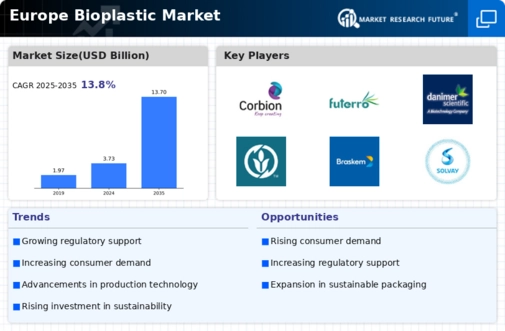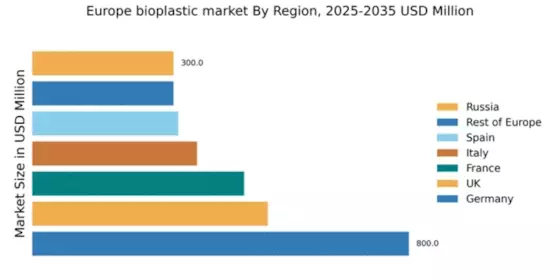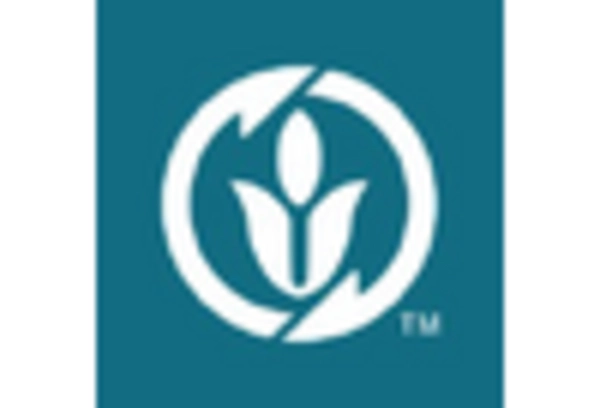Corporate Sustainability Initiatives
Corporate sustainability initiatives are increasingly influencing the bioplastic market in Europe. Many companies are adopting sustainability as a core component of their business strategies, aiming to reduce their carbon footprints and enhance their brand image. This trend is evidenced by a report indicating that over 70% of European firms have set sustainability targets, which often include the integration of bioplastics into their supply chains. As corporations seek to meet these targets, the demand for bioplastics is likely to rise, fostering innovation and investment in the sector. Consequently, the bioplastic market stands to gain from the alignment of corporate goals with sustainable practices.
Rising Regulatory Pressure on Plastic Waste
Rising regulatory pressure on plastic waste is a significant driver for the bioplastic market in Europe. Governments are implementing stringent regulations aimed at reducing plastic waste and promoting the use of biodegradable materials. For instance, the European Union has set ambitious targets to reduce single-use plastics, which has led to an increased focus on bioplastics as viable alternatives. This regulatory environment is expected to propel the bioplastic market forward, as manufacturers adapt to comply with new laws and capitalize on the growing demand for sustainable materials. The market could see a compound annual growth rate (CAGR) of around 15% as a result of these regulatory changes.
Consumer Preference for Eco-Friendly Products
The increasing consumer preference for eco-friendly products is a pivotal driver in the bioplastic market. As awareness of environmental issues grows, consumers in Europe are actively seeking sustainable alternatives to traditional plastics. This shift in consumer behavior is reflected in market data, indicating that approximately 60% of European consumers are willing to pay a premium for products made from bioplastics. This trend is likely to encourage manufacturers to innovate and expand their bioplastic offerings, thereby enhancing the overall market landscape. The bioplastic market is expected to benefit from this consumer-driven demand, as companies strive to align their product lines with the values of environmentally conscious consumers.
Investment in Bioplastic Research and Development
Investment in bioplastic research and development is a crucial driver for the bioplastic market in Europe. Increased funding from both public and private sectors is facilitating the exploration of new bioplastic materials and applications. Recent data suggests that R&D spending in the bioplastics sector has surged by over 25% in the past few years, reflecting a growing recognition of the potential benefits of bioplastics. This influx of investment is likely to accelerate innovation, leading to the introduction of novel bioplastic products that meet diverse consumer needs. Consequently, the bioplastic market is expected to expand as new technologies and materials emerge from ongoing research efforts.
Technological Innovations in Bioplastic Production
Technological innovations in bioplastic production are reshaping the bioplastic market in Europe. Advances in biotechnology and materials science are enabling the development of new bioplastics that are not only more efficient to produce but also possess enhanced properties. For example, recent breakthroughs in fermentation technology have led to the creation of bioplastics that can be produced from a wider range of renewable resources. This innovation is likely to lower production costs and improve the performance of bioplastics, making them more competitive with traditional plastics. As a result, the bioplastic market is poised for growth, driven by these technological advancements.


















Leave a Comment